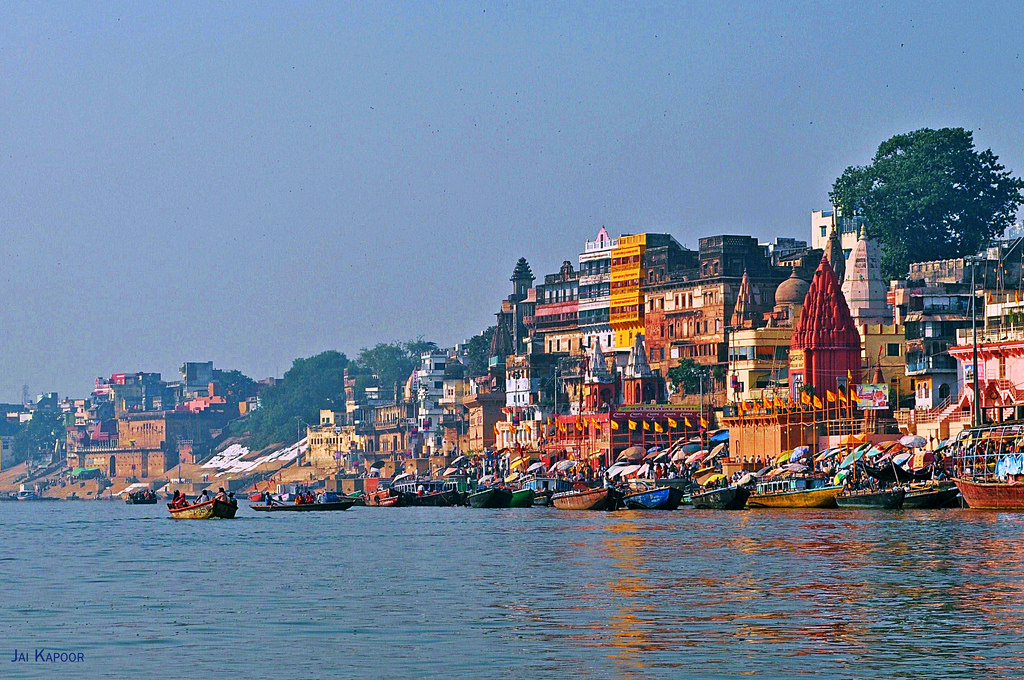A survey by the United Nations shows that 400-500 kg of wood is required to cremate one body, and according to a report in CNN, 50 to 60 million trees are burned during cremations every year in India.
The Manikarnika Ghat in Varanasi, alone, cremates around 100 bodies every day.
While the last rites of a loved one are understandably a very sentimental issue, here are some of the alternatives that can ensure an uncompromised cremation while also guaranteeing less stress on the firewood chopped for funerals.
1. Cow Dung Cakes:

The wood consumed by funeral pyres in Varanasi is chopped from Himalayan trees, and in a bid to ease the stress on the forests, Varanasi is set to become the first city in Uttar Pradesh to use only cow dung cakes for cremation – in place of hardwood.
The administration is encouraging the use of Cow Dung cakes instead of wood to perform the last rites. Vedic scholar Chandramauli Upadhyaya backed the move, saying “There is no dosh (fault) in using cow dung cakes in cremation. In fact, cow dung cakes have always been used along with wood.”
BD Tripathi, an environmental scientist, confirmed that this change would reduce pollution.
2. Pyre Ovens:
Some villages along the shores of Ganga have been named “Ganga Grams” under the Namami Gange project. These villages have adopted a greener way of cremation by using 100 kg wood in place of 500 kg. They have also introduced ‘pyre ovens’ on cremation sites that would help generate enough heat to efficiently burn a human body with less wood.
AK Saxena, the technical advisor of National Ganga River Basin Authority (NGRBA) said, “The special pyre ovens are designed to direct maximum heat near the head and waist parts of the body since these body parts require more time and intensity of heat to burn. Therefore, even with less wood fuel, the cremation can be done properly.”
3. White coal cremation:
Pune Corporators, Smita Vaste and Saraswati Shendge, have proposed an option of white coal in place of wood for cremation. Although this change will not be made mandatory, to respect the sentiments of people, the corporators are encouraging its use to avoid pollution.
White coal is also called as biomass briquette, is made from agricultural waste or biomass like sugarcane bagasse, wood chips and shavings, castor seed shells, rice husk and paddy straw etc. “The wood used in crematoriums reduces green cover. It also created pollution. This alternative fuel, common in the UK, will help reduce pollution. It will also help keep the environment clean,” Vaste told Pune Mirror.
You may also like: How This Woman Broke Taboos By Transforming Chennai’s Oldest Crematorium
A number of crematoriums in India have followed these examples and with grand success.
The Nagpur Municipal Corporation successfully made the Ambazari Ghat, India’s first declared eco-friendly crematorium. Ambazari uses agro-waste, LPG or cow-dung for cremations, reducing levels of pollution.
The Kolkata Municipal Corporation has also been approached with a proposal of using cow dung cakes instead of wood for cremation.
Featured image source: Flickr.
Like this story? Or have something to share?
Write to us: contact@thebetterindia.com
Connect with us on Facebook and Twitter.
NEW: Click here to get positive news on WhatsApp!
If you found our stories insightful, informative, or even just enjoyable, we invite you to consider making a voluntary payment to support the work we do at The Better India. Your contribution helps us continue producing quality content that educates, inspires, and drives positive change.
Choose one of the payment options below for your contribution-
By paying for the stories you value, you directly contribute to sustaining our efforts focused on making a difference in the world. Together, let's ensure that impactful stories continue to be told and shared, enriching lives and communities alike.
Thank you for your support. Here are some frequently asked questions you might find helpful to know why you are contributing?

